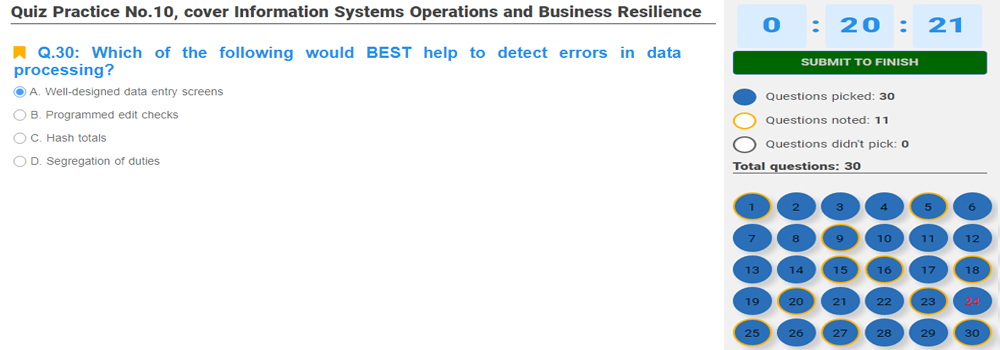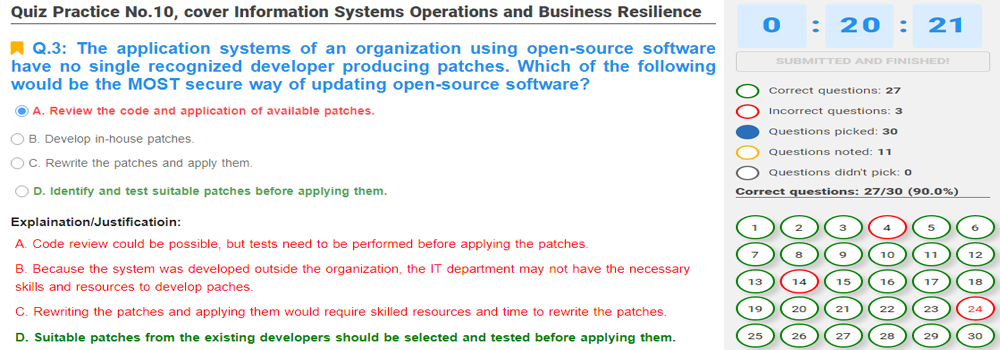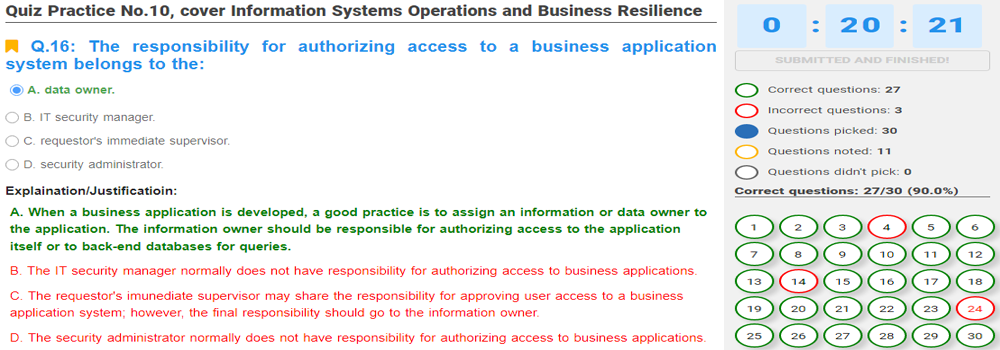[1Z0-071 DUMP UPDATED JULY, 2024] Oracle Database SQL Cert code: 1Z0-071, Questions of the exam: 63, Minutes of the exam: 120, Correct to pass: 63%.
[1Z0-071 DUMP UPDATED JUNE, 2024] Oracle Database SQL Cert code: 1Z0-071, Questions of the exam: 63, Minutes of the exam: 120, Correct to pass: 63%.
[1Z0-071 DUMP UPDATED MAY, 2024] Oracle Database SQL Cert code: 1Z0-071, Questions of the exam: 63, Minutes of the exam: 120, Correct to pass: 63%.
[1Z0-071 DUMP UPDATED MARCH, 2024] Oracle Database SQL Cert code: 1Z0-071, Questions of the exam: 63, Minutes of the exam: 120, Correct to pass: 63%.
[1Z0-071 DUMP UPDATED JANUARY, 2024] Oracle Database SQL Cert code: 1Z0-071, Questions of the exam: 63, Minutes of the exam: 120, Correct to pass: 63%.
SOME NOTES ABOUT ORACLE DATABASE SQL:
Oracle Database SQL [1Z0-071] is an important and mandatory certification on your path to becoming an expert in your field.
To get this certificate, you need to firmly and confidently grasp the content listed below. Then, you need to pass the exam directly on ORACLE's system. This exam has a duration of 120 minutes, with 63 questions. You need to answer correctly at least 63% of the total questions on the exam.
Below are the contents that you need to grasp firmly and confidently before registering to take the exam on ORACLE's system:
1. Relational Database concepts
1.1. Explaining the theoretical and physical aspects of a relational database
1.2. Relating clauses in SQL Select Statement to Components of an END
1.3. Explaining the relationship between a database and SQL
2. Retrieving Data using the SQL SELECT Statement
2.1. Using Column aliases
2.2. Using The SQL SELECT statement
2.3. Using concatenation operator, literal character strings, alternative quote operator, and the DISTINCT keyword
2.4. Using Arithmetic expressions and NULL values in the SELECT statement
3. Restricting and Sorting Data
3.1. Applying Rules of precedence for operators in an expression
3.2. Limiting Rows Returned in a SQL Statement
3.3. Using Substitution Variables
3.4. Using the DEFINE and VERIFY commands
3.5. Sorting Data
4. Using Single-Row Functions to Customize Output
4.1. Manipulating strings with character functions in SQL SELECT and WHERE clauses
4.2. Performing arithmetic with date data
4.3. Manipulating numbers with the ROUND, TRUNC and MOD functions
4.4. Manipulating dates with the date function
5. Using Conversion Functions and Conditional Expressions
5.1. Applying the NVL, NULLIF, and COALESCE functions to data
5.2. Understanding implicit and explicit data type conversion
5.3. Using the TO_CHAR, TO_NUMBER, and TO_DATE conversion functions
5.4. Nesting multiple functions
6. Reporting Aggregated Data Using Group Functions
6.1. Restricting Group Results
6.2. Creating Groups of Data
6.3. Using Group Functions
7. Displaying Data from Multiple Tables
7.1. Using Self-joins
7.2. Using Various Types of Joins
7.3. Using Non equijoins
7.4. Using OUTER joins
7.5. Understanding and Using Cartesian Products
8. Using Subqueries to Solve Queries
8.1. Using Single Row Subqueries
8.2. Using Multiple Row Subqueries
8.3. Update and delete rows using correlated subqueries
9. Using SET Operators
9.1. Matching the SELECT statements
9.2. Using the ORDER BY clause in set operations
9.3. Using The INTERSECT operator
9.4. Using The MINUS operator
9.5. Using The UNION and UNION ALL operators
10. Managing Tables using DML statements
10.1. Managing Database Transactions
10.2. Controlling transactions
10.3. Perform Insert, Update and Delete operations
10.4. Performing multi table Inserts
10.5. Performing Merge statements
11. Managing Indexes Synonyms and Sequences
11.1. Managing Indexes
11.2. Managing Synonyms
11.3. Managing Sequences
12. Use DDL to manage tables and their relationships
12.1. Describing and Working with Tables
12.2. Describing and Working with Columns and Data Types
12.3. Creating tables
12.4. Dropping columns and setting column UNUSED
12.5. Truncating tables
12.6. Creating and using Temporary Tables
12.7. Creating and using external tables
12.8. Managing Constraints
13. Managing Views
13.1. Managing Views
14. Controlling User Access
14.1. Differentiating system privileges from object privileges
14.2. Granting privileges on tables
14.3. Distinguishing between granting privileges and roles
15. Managing Objects with Data Dictionary Views
15.1. Using data dictionary views
16. Managing Data in Different Time Zones
16.1. Working with CURRENT_DATE, CURRENT_TIMESTAMP,and LOCALTIMESTAMP
16.2. Working with INTERVAL data types
GOODLUCK TO YOU!!!




